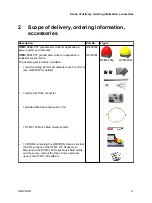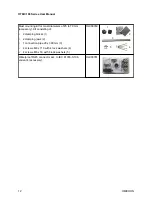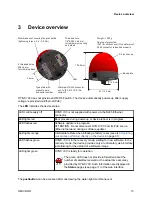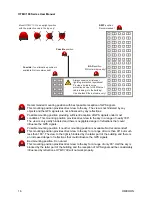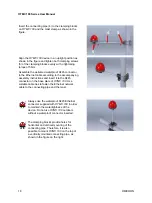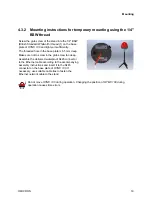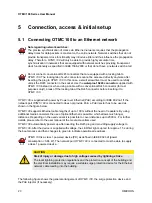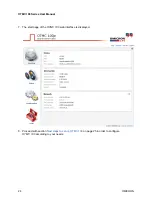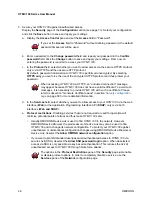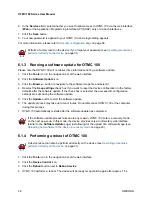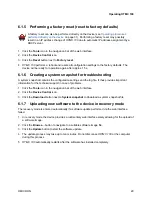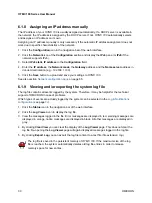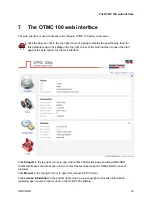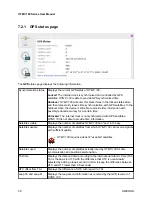
5.3 Next steps to set up OTMC 100
After connecting your
OTMC 100
to the network and accessing the device from your computer, you
have to configure your
OTMC 100
according to your needs.
OTMC 100
help for a detailed
description of the web interface, or section
Operating procedures performed via the web interface
page 27 for a description of the most important operating procedures.
Proceed as follows to set up and configure your
OTMC 100
. Consult your network administrator if you
do not know the correct settings.
1. Configure the network settings.
Open the
Configuration
section of the web interface and display the
Network
page (see page
).
a. Configure the network/IP settings according to the needs of your network. Click the
Save All
button to save and apply your settings.
By default,
OTMC 100
will attempt to get an IPv4 address via DHCP and assign
an IPv6 address using the automatic configuration. If no DHCP server is
available for IPv4,
OTMC 100
uses the zeroconf service to automatically assign
an IP address on its own.
2. Configure the PTP settings.
Display the
PTP
page of the
Configuration
section (see page
). Select your configuration and
click the
Save
button to save and apply your settings. The most important PTP settings are:
a.
PTP profile
(General Settings pane): All PTP devices that should synchronize to each other
must use the same profile.
•
Use the
Default E2E
or
Default P2P
profile for industrial environments.
Default P2P (peer-to-peer) can only be used if the switches used in the network support
and are configured for operation as peer-to-peer transparent or boundary clocks as defined
in IEEE 1588-2008.
Use Default E2E (end-to-end) if standard switches are used in the network and the higher
synchronization error introduced by these switches is acceptable. The Default P2P profile,
the Power utility profile (according to IEC 61850-9-3:2016), and the Power profiles
(according to IEEE C37.238-2011 or C37.238-2017) will not work with those network
switches.
•
Use the profiles
Power (C37.238-2011)
,
Power (C37.238-2017)
or
Power utility
(61850-9-3:2016)
for power industry environments (
OTMC 100p
only).
b.
Operation mode
(General Settings pane): Always use the
one step
operation mode unless
there are devices in the network that do not correctly handle one step master clocks.
c.
Domain number
(Default Settings pane): All PTP devices that should synchronize to each
other must use the same domain number.
d.
Transport
(Port pane): Select the transport mechanism according to the needs of your
network. All PTP devices that should synchronize to each other must use the same transport
mechanism.
Connection, access & initial setup
OMICRON
25

